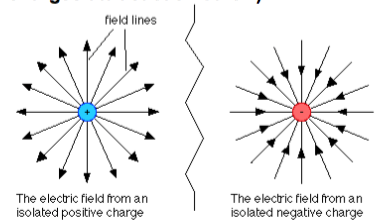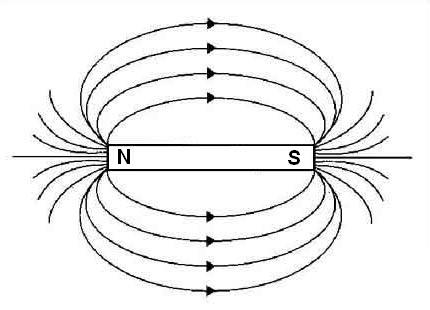Introduction
A passenger aircraft has many components that need electrical power to function, these are referred to as the "consumers" or "loads". The aircraft's electrical system generates and distributes the electrical energy, the configuration of which is dependent on type and role of the aircraft.
The primary electrical system on a large modern jet is AC (alternating current). It usually provides 115V and 200V at a constant frequency of 400Hz. There are a few consumers that need DC (direct current), this will be provided via a rectifier.
DC = Direct Current (current flowing in one direction only)
Inverter = Converts DC into AC
AC = Alternating Current (current rapidly changing its direction)
Rectifier = Converts AC into DC
Electricity
Electric current is produced when electrons are flowing through a conductor. A conductor is any material which readily allows electrical current to flow through it. Current will only flow when the circuit is complete (closed).
It's not required for the electrons to move around an entire circuit to produce DC, just making them move is enough to produce the electrical energy required (AC for example).
Every substance we know is made up of a number of atoms. An atom consists of:
Protons = Have a positive charge
Electrons = Have a negative charge
Neutrons = Have no charge (neutrally charged)
The nucleus of an atom always contains a combination of protons and neutrons and is therefore overall positively charged. The electrons surround the nucleus because of attraction (+ and - attract each other).

When an atom has the same number of protons and electrons = Electrically neutral atom
When an atom has a different number of protons and electrons = Ion
The electrons in the atom are not tightly bound to the nucleus which means that they can 'jump' from one atom to another through the material. These electrons are referred to as "free electrons". When this happens, some atoms will have more electrons than protons (negatively charged) and some less (positively charged).
Insulators = Materials that cannot easily conduct electrical current (rubber, wood and plastic for example)
Conductors = Materials that can easily conduct electrical current (copper, gold and silver for example)
- Providing the driving force for electrical current
Electrons that flow through a conductor will produce electrical current but something has to encourage the electrons to flow in the circuit. In a simple flashlight circuit for example, a battery will supply that energy by pushing the electrons through the circuit and the lightbulb.

Conventional flow = Before the discovery of electrons, it was assumed that something flowed from positive to negative
Electron flow = What actually happens is that the electrons flow from negative to positive
- Electric Fields
Around any point which has a positive or negative charge, an electric field exists. In this electric field, an electric charge that is free to move behaves in a predictable way (because of the forces of attraction/repulsion)
A positive charged point = electric field lines points away from the point
A negative charged point = electric field lines points towards the point
"Like charged repel each other while unlike charged attract each other"

- Magnetic Fields
A magnetic field exists around all magnets and around any conductor through which current is flowing.
A magnetic field always has a North and South pole. The lines of force (or "lines of flux") of a magnetic field run from North to South in curved lines around the outside of the magnetic and they will never cross each other!

- Induction
Lorentz Force = When a charged particle moves through such a magnetic field, a force on the charged particle is produced which deflects its movement through the field.
The Lorentz Force is maximum when movement of the particles is at right angles to the direction of the magnetic field. When the particles are moving in the same direction as the magnetic field, no Lorentz Force is exerted on them.
If we have a conductive piece of wire (in which lots of charged particles are free to move) and we move it through such a magnetic field, a current is induced to flow by the Lorentz Force.
A passenger aircraft has many components that need electrical power to function, these are referred to as the "consumers" or "loads". The aircraft's electrical system generates and distributes the electrical energy, the configuration of which is dependent on type and role of the aircraft.
The primary electrical system on a large modern jet is AC (alternating current). It usually provides 115V and 200V at a constant frequency of 400Hz. There are a few consumers that need DC (direct current), this will be provided via a rectifier.
DC = Direct Current (current flowing in one direction only)
Inverter = Converts DC into AC
AC = Alternating Current (current rapidly changing its direction)
Rectifier = Converts AC into DC
Electricity
Electric current is produced when electrons are flowing through a conductor. A conductor is any material which readily allows electrical current to flow through it. Current will only flow when the circuit is complete (closed).
It's not required for the electrons to move around an entire circuit to produce DC, just making them move is enough to produce the electrical energy required (AC for example).
Every substance we know is made up of a number of atoms. An atom consists of:
Protons = Have a positive charge
Electrons = Have a negative charge
Neutrons = Have no charge (neutrally charged)
The nucleus of an atom always contains a combination of protons and neutrons and is therefore overall positively charged. The electrons surround the nucleus because of attraction (+ and - attract each other).

When an atom has the same number of protons and electrons = Electrically neutral atom
When an atom has a different number of protons and electrons = Ion
The electrons in the atom are not tightly bound to the nucleus which means that they can 'jump' from one atom to another through the material. These electrons are referred to as "free electrons". When this happens, some atoms will have more electrons than protons (negatively charged) and some less (positively charged).
Insulators = Materials that cannot easily conduct electrical current (rubber, wood and plastic for example)
Conductors = Materials that can easily conduct electrical current (copper, gold and silver for example)
- Providing the driving force for electrical current
Electrons that flow through a conductor will produce electrical current but something has to encourage the electrons to flow in the circuit. In a simple flashlight circuit for example, a battery will supply that energy by pushing the electrons through the circuit and the lightbulb.

Conventional flow = Before the discovery of electrons, it was assumed that something flowed from positive to negative
Electron flow = What actually happens is that the electrons flow from negative to positive
- Electric Fields
Around any point which has a positive or negative charge, an electric field exists. In this electric field, an electric charge that is free to move behaves in a predictable way (because of the forces of attraction/repulsion)
A positive charged point = electric field lines points away from the point
A negative charged point = electric field lines points towards the point
"Like charged repel each other while unlike charged attract each other"

- Magnetic Fields
A magnetic field exists around all magnets and around any conductor through which current is flowing.
A magnetic field always has a North and South pole. The lines of force (or "lines of flux") of a magnetic field run from North to South in curved lines around the outside of the magnetic and they will never cross each other!

- Induction
Lorentz Force = When a charged particle moves through such a magnetic field, a force on the charged particle is produced which deflects its movement through the field.
The Lorentz Force is maximum when movement of the particles is at right angles to the direction of the magnetic field. When the particles are moving in the same direction as the magnetic field, no Lorentz Force is exerted on them.
If we have a conductive piece of wire (in which lots of charged particles are free to move) and we move it through such a magnetic field, a current is induced to flow by the Lorentz Force.

 Home
Home
